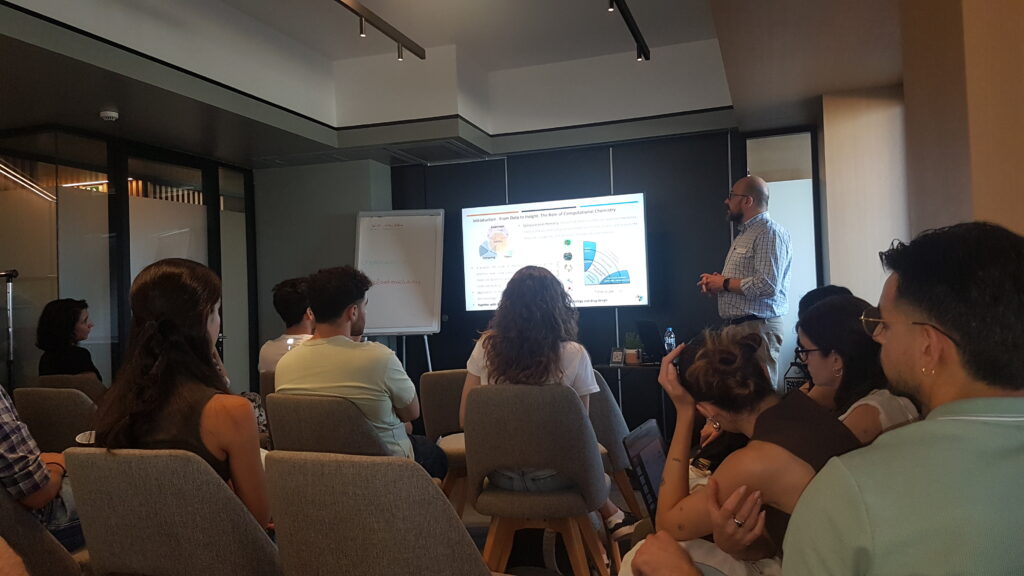Konstantinos D. Papavasileiou from Novamechanics presented SCENARIOS at the EuMINe Training School – Driving Materials Innovation with Cutting -Edge Digital Platforms, Tools, and Algorithms that took place on 19-20th of June 2025 in Athens. Approximately 40 people attended the training school overall. The audience was diverse, including scientists specializing in computational chemistry, university professors, and students.
The conference brought together researchers from across Europe to address how digital tools and artificial intelligence are transforming materials science and health research. Konstantinos gave a talk titled “Enhancing Drug Discovery with Asclepios KNIME Nodes,” highlighting the development of NovaMechanics tools for drug discovery and computational toxicology. He also presented a case study of PFAS binding to the PPARα nuclear receptor and introduced two published papers from the SCENARIOS project. His presentation covered the scientific foundations behind the Asclepios KNIME nodes and how they integrate with the Enalos Cloud platform to enable predictive modeling and virtual screening.
Drawing from Konstantinos experience in the SCENARIOS project, he also emphasized the ability of these tools to be applied towards solving day-to-day computational chemistry and environmental toxicology problems. The presentation also showed the broader usefulness of open-access electronic platforms to enable interdisciplinary research as well as regulatory science advancement. The training school was based on practice-oriented, experience-driven learning and promoted sharing between the fields of knowledge in chemistry, materials science, and biomedicine.

It was a great experience to become familiar with something new, to get into contact with other researchers, and to be among the starting group driving digital transformation in science.
The audience (around 20-30 present at this presentation presentation) was especially curious about PFAS and their impact on the environment. Konstantinos’ presentation on computer simulation techniques—namely, their application in probing PFAS-protein interactions and as component blocks of machine learning predictive models—was well-received. These advanced modeling approaches were deemed essential tools for understanding PFAS behavior and distribution. The discussion underlined the ongoing need for research and collaboration throughout Europe toward enhancing our knowledge and PFAS pollution control. In general, the training school did manage to bring together material scientists and stakeholders, engaging in considerable dialogue and information exchange not only on computational tools but also on this hot topic.